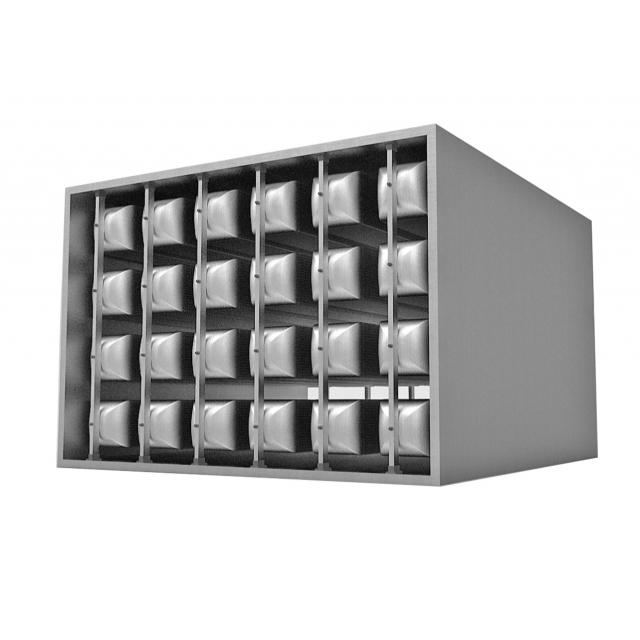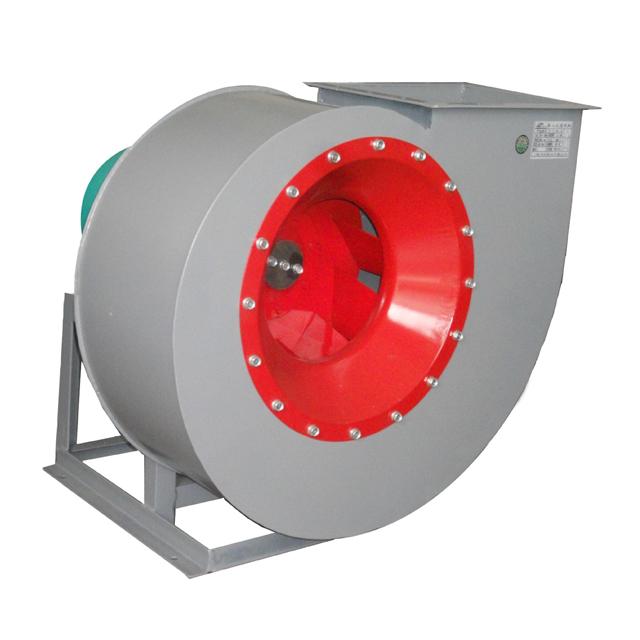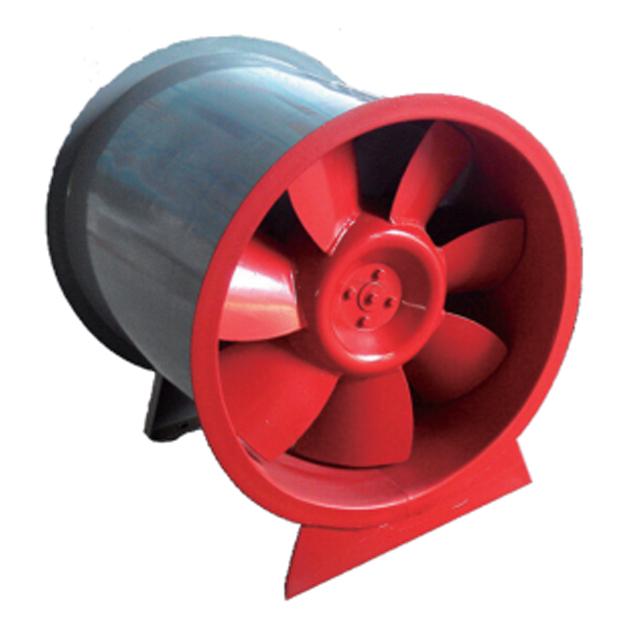How to install air valves
1.1 Determine the installation location and type selection
When determining the installation position and selection of the air valve, the overall layout and the specific needs of the system must be fully considered. First, the installation position should be selected based on the direction and path of the air flow, ensuring that the wind valve can effectively control the flow and direction of the air flow. For example, in HVAC (heating, ventilation and air conditioning) systems, air valves are usually installed at the intersection of air supply pipes and return air pipes to allow for precise temperature control in different areas as needed.
In terms of type selection, the type and specification of the air valve should be determined according to the parameters such as the air volume, air pressure and temperature of the system. For example, for systems with large air volume, air valves with larger diameter and lower resistance coefficient should be selected to ensure the smooth circulation of air flow. At the same time, the material of the wind valve should also consider its corrosion resistance and high temperature resistance, in order to meet the needs of different working environment.
1.2 Prepare the installation tools and materials
Before the air valve installation, fully prepared installation tools and materials are the key to ensure the smooth installation process. First of all, the tools to be prepared include but not limited to screwdrivers, wrenches, pliers, electric drill, measuring ruler, etc. These tools will be used to fix the air valve, adjust the Angle, connect the pipe and other links. At the same time, according to the type and installation position of the wind valve, it may also be necessary to prepare specific lifting equipment and safety ropes to ensure that the wind valve can be safely and accurately hoisted to the predetermined position.
In terms of material preparation, in addition to the wind valve itself and its accessories, it is also necessary to prepare sealant, screws, nuts, gaskets and other connections to ensure that the connection between the wind valve and the pipe is firm and sealed. In addition, according to the special requirements of the installation environment, it may also be necessary to prepare anticorrosive coatings, fireproof materials, etc., to improve the durability and safety of the wind valve.
In the preparation process, attention also needs to be paid to whether the quality and specifications of the materials meet the requirements. For example, the specifications of the screws and nuts shall match the threads on the air valve, and the model of the sealant shall meet the sealing requirements of the piping system. At the same time, in order to avoid waste and delay in the installation process, the quantity of the required materials should be calculated in advance, and try to choose reliable quality and reasonable price suppliers for procurement.
1.3 Check the integrity of the air valve and its accessories
Check the integrity of the air valve and its accessories is a crucial step in the preparation before the air valve installation. This is not only related to the operation effect of the air valve after the installation, but also directly affects the stability and safety of the whole ventilation system. During the inspection process, we need to conduct a careful observation and test of each part of the wind valve.
First, we need to make sure that the main structure of the wind valve is not damaged or deformed. This can be done by visual inspection and simple physical tests, such as gently tapping the surface of the air valve to hear if the sound is uniform, and looking for obvious depressions or bumps. In addition, we can also use professional measuring tools, such as vernier calipers or micrometer, to make accurate measurement of the size of the wind valve, to ensure that it meets the design requirements.
Secondly, for the wind valve accessories, such as seals, fasteners, etc., we also need to carry out strict inspection. The sealing strip is the key to the sealing performance of the air valve, so we need to check whether it is complete, undamaged, and close to the contact surface of the air valve. Fasteners are related to the stability and safety of the wind valve, we should check whether they are loose, missing or damaged, and ensure that their quantity, specifications and installation location meet the design requirements.
2.1 Install the supports and fixtures
Selection and installation of the mounting bracket and fixing parts during installing the air valve is critical. First, the selection of the installation bracket should be determined according to the size, weight and working environment of the wind valve, to ensure that it has sufficient carrying capacity and stability. For example, in large industrial ventilation systems, where wind valves may weigh hundreds of kilograms, it is necessary to choose support materials with high strength and corrosion resistance, such as stainless steel or carbon steel.
When installing the bracket, ensure that the contact surface between the bracket and the installation position is flat and free of debris, and make accurate measurements to ensure the levelness and verticality of the bracket. At the same time, the installation of fixings should strictly follow the relevant specifications, using the appropriate fasteners and connection methods, such as bolts, nuts and welding, etc., to ensure the firm connection between the wind valve and the bracket.
In addition, in order to ensure the stable operation of the air valve, we also need to regularly check and maintain the installation bracket and fixings. This includes checking the brackets for rust, loose fasteners, and cracks in the joints. For the problems found, corresponding repair measures should be taken in time, such as replacement of seriously corroded support, fastening loose fasteners and repairing cracks. Through these measures, we can effectively extend the service life of the wind valve and improve the operation efficiency of the whole ventilation system.
2.2 Lift the air valve to the installation position
During the wind valve installation process, lifting the air valve to the installation position is a crucial step. First, it is necessary to ensure the safety and stability of the hoisting equipment, usually using professional lifting machinery and ropes. Before lifting, the weight and size of the air valve should be carefully calculated, and the appropriate lifting point and lifting method should be selected to ensure the safe and smooth lifting process.
During the lifting process, the operating procedures should be strictly followed to avoid accidents. The lifting belt or lifting chain can be used to fix the wind valve to the lifting equipment to ensure that the wind valve does not shake or tilt during the lifting process. At the same time, the bearing capacity of the hoisting equipment should be ensured to avoid equipment damage or safety accidents caused by overload.
When lifting the wind valve to the installation position, special attention should be paid to the direction and angle of the wind valve. According to the design and use requirements of the wind valve, ensure that the opening of the wind valve is correctly oriented and aligned with the connecting port of the pipe. If the installation position is high or the space is small, special lifting tools or methods, such as pulley sets or expansion arms.
In addition, after lifting the air valve to the installation position, it is also necessary to make preliminary adjustment and fixation. Tool such as level ruler or laser rangefinder can be used to ensure the accuracy and level of the wind valve installation position. Then, use bolts, nuts and other fasteners to fix the air valve on the bracket or fasteners to ensure the stability and safety of the air valve.
2.3 Connect the air valve and the pipe
During the installation of the wind valve, connecting the wind valve and the pipe is a crucial link. First, it is necessary to ensure that the interface of the wind valve matches the size of the pipe to avoid air leakage or weak installation. In practice, standardized interface sizes are recommended to ensure the accuracy and reliability of the installation.
When connecting the air valve to the pipe, special sealing materials and fasteners shall be used to ensure the sealing and stability of the connection. For example, rubber gaskets or silicone sealing strips can be used to enhance the sealing effect, while fastening with high-strength bolts and nuts. In addition, suitable connections and materials shall be selected according to the pressure grade and temperature range of the piping system.
In the process of connection, the following points should also pay attention to. First, ensure the cleanliness of the pipe and air valve to avoid the impact of impurities and dirt on the connection quality. Secondly, the sealing material should be installed correctly to avoid dislocation or distortion. Finally, it is necessary to properly control the tightening strength to avoid the sealing material damage or pipe deformation caused by too tight, but also to avoid the weak connection caused by too loose.
2.4 Adjust the angle and position of the air valve
During the installation of the wind valve, adjusting the angle and position of the wind valve is a crucial step. This is not only related to the normal operation of the wind valve, but also directly affects the efficiency and performance of the whole ventilation system. When adjusting the Angle of the air valve, it is necessary to accurately calculate and set the opening degree of the air valve according to the design requirements of the ventilation system and combined with the actual situation of the site.
When adjusting the position of the air valve, many factors also need to be considered comprehensively. First, to ensure that the installation position of the wind valve meets the layout requirements of the ventilation system, to avoid causing unnecessary resistance or pressure loss to the system. Secondly, the maintenance and maintenance of the wind valve should be taken into account to ensure that it can be easily operated when needed. In addition, it is also necessary to pay attention to the coordination between the air valve and the surrounding environment to avoid adverse effects on the indoor environment.
In practice, we can use some advanced tools and technologies to assist in adjusting the Angle and position of the wind valve. For example, the use of a laser rangefinder and an angle meter can accurately measure the opening and angle of the air valve, ensuring the accuracy of the adjustment. At the same time, combined with the simulation software of the ventilation system, the adjusted effect can be predicted and analyzed to further optimize the adjustment scheme.
3.1 Check the sealing property of the air valve
During the inspection process after the air valve is installed, the sealing test is a crucial part. Sealing is not only related to the normal operation of the air valve, but also directly affects the efficiency and safety of the whole ventilation system. In order to ensure that the sealing of the wind valve meets the standard, a series of strict testing methods and procedures need to be adopted.
First, a professional sealing test instrument is used to conduct a pressure test on the wind valve. During the test, we set specific pressure values and observed the wind valve performance under pressure. If the air valve has air leakage during the test, we will immediately check and repair until the sealing meets the requirements.
In addition to the pressure test, carefully check the air valve seals. The sealing strip is the key component of the air valve sealing, and its quality and state directly affect the sealing effect of the air valve. We will visually inspect the seals to ensure that there is no damage or aging. At the same time, we will also use professional measuring tools to measure the size and thickness of the seal strip, to ensure that it meets the design requirements.
In practice, we also found some common problems that affect the sealing of the air valve. For example, the improper installation position of the wind valve, the loosening of the fixings may lead to the reduced sealing of the wind valve. Therefore, during the inspection process, we also need to carefully check the installation position and fixings of the wind valve to ensure that it meets the installation requirements.
In conclusion, checking the sealing of the air valve is a key step to ensure the proper operation of the ventilation system. Through the use of professional testing instruments and strict inspection process, we can ensure that the sealing of the wind valve meets the standard, to provide a strong guarantee for the normal operation of the ventilation system.
3.2 Check the flexibility of the air valve
After the air valve is installed, checking its flexibility is the key step to ensure the proper operation of the air valve. The flexibility of air valve is not only related to the accuracy of air volume, but also directly affects the operation efficiency of the whole ventilation system. Therefore, when checking the flexibility of the wind valve, we need to take a series of meticulous and rigorous measures.
First of all, we need to manually operate the regulating mechanism of the wind valve to observe whether its rotation is smooth and whether there is any lag.According to experience, a qualified air valve should be able to rotate easily when adjusting, and the corresponding relationship between the rotation Angle and the air volume adjustment should be accurate. If the air valve is found to be not flexible, it may be due to errors in the installation process or a quality problem of the air valve itself. At this point, we need to adjust or replace it in time.
Secondly, we can use professional test equipment to quantify the flexibility of the wind valve. For example, a torque gauge can be used to measure the rotational torque of the air valve regulating mechanism at different angles to determine its flexibility. According to the industry standard, the rotating torque of the wind valve should fluctuate within a certain range, beyond this range is considered unqualified. Through this method, we can evaluate the flexibility of the wind valve more accurately, and take corresponding measures to improve it.
In addition, we can also refer to some successful cases and lessons learned. For example, in some large construction projects, the problem of inflexible adjustment due to improper installation of wind valves often occurs. In order to avoid similar problems, we can learn from the experience of these projects and strengthen the quality control and inspection during the installation process.
3.3 Check whether the connection between the air valve and the pipe is firm
After the wind valve is installed, it is crucial to ensure the connection between the air valve and the pipe. This is not only related to the normal operation of the air valve, but also directly affects the stability and safety of the whole ventilation system. Therefore, in the inspection link after the installation of the wind valve, the inspection of the firm connection between the wind valve and the pipe is an indispensable step.
First, the connection between the air valve and the pipe one by one. The torque wrench can ensure that the tightening torque of the connecting bolts meets the design requirements, while the vibration analyzer can detect the loose or abnormal vibration of the connection. Through these detection means, we can find and solve the problem of weak connection in time.
In addition, to ensure the long-term stability of the air valve and pipe connection, we also need to check and maintain the connection regularly. This includes checking whether the connecting bolts are loose and whether the sealing strips are aging. For the problems found, the corresponding repair measures should be taken in time, such as replacing the sealing strip, fastening the bolts, etc. Only in this way can we ensure that the connection between the air valve and the pipe always remains firm and provide a strong guarantee for the normal operation of the ventilation system.
4.1 Clean the surface of the air valve regularly
In the daily maintenance of the wind valve, the regular cleaning of the air valve surface is a crucial link. As an important part of the ventilation system, the cleanliness of the surface of the wind valve directly affects the operation efficiency and air quality of the ventilation system. Based on industry standards and practical experience, it is generally recommended to clean the air valve every quarter.
When cleaning the surface of the air valve, the ventilation system should be closed first to ensure that the air valve is closed. Then, use professional cleaning tools such as soft hair brush, vacuum cleaner or high pressure air gun to remove dust, dirt and debris from the surface of the air valve. For stains that are difficult to remove, they can be wiped with neutral cleaner, but take attention to avoid using corrosive detergent to damage the surface of the air valve.
Special attention should be paid to the seals and fasteners of the air valve during cleaning. The sealing strip is the key component to maintain the sealing of the air valve. If, it should be replaced with aging or damage. Ffasteners are related to the stability and safety of the air valve. If there is loosening, it should be tightened in time.
According to a study of industrial ventilation systems, regularly cleaning the surface of air valves can significantly improve the operating efficiency of the ventilation system and reduce energy consumption by about 10 to 15 percent. At the same time, the surface of the clean air valve is smoother, reducing the resistance of air flow, thus increasing the air volume of the ventilation system.
In addition, regularly cleaning the air valve surface also helps to extend the service life of the wind valve. Because the accumulation of dust and dirt will accelerate the wear and aging of the wind valve, so the timely removal of these dirt can slow down the wear speed of the wind valve and extend its service life.
4.2 Check whether the fastener of the air valve is loose
In the daily maintenance of the air valve, it is crucial to check whether the fastener is loose. Fasteners, such as the screws, nuts and bolts of the air valve, are the key components to ensure the stable operation of the air valve. Once these fasteners become loose, they will not only affect the sealing and flexibility of the air valve, but also may lead to noise during the operation, and even cause safety accidents.
To ensure that the fasteners of the air valve are in good condition, the fasteners are recommended regularly. During inspection, fasteners shall be checked one by one using professional tools such as torque wrench. Depending on the specifications of the wind valve and the operating environment, a reasonable torque range can be set to ensure that the fastener is neither tight nor loose.
In addition, the frequency of inspection should be increased for key parts, such as those under high pressure or vibration. For example, in an industrial production environment, wind valves may be affected by various factors such as high temperature, high pressure and vibration, all of which may lead to fastener loosening. Therefore, it is recommended to inspect key parts at least once a month.
If the fastener is found loose during the inspection, it should be tightened immediately. At the same time, the causes of loosening should also be analyzed, such as whether it is caused by vibration, corrosion or material fatigue. For the loosening caused by material fatigue or corrosion, the fasteners should be replaced in time to avoid potential safety risks.
4.3 Check whether the seal strip of the air valve is aging
In the daily maintenance of air valves, checking the aging status of the seals is a crucial link. As the key component of the air valve, the integrity is directly related to the sealing performance of the air valve. Once the sealing strip is aged, it will not only lead to the sealing performance of the wind valve, but also cause air leakage, and affect the operation efficiency of the whole ventilation system. Therefore, regular inspection of the air valve seals is essential to ensure the proper operation of the air valve.
When checking the air valve seal strip, we can use the visual inspection method. First, look at the color and texture of the seal strip, and if the seal strip shows obvious discoloration, cracking or hardening, then it is likely to be aged. Secondly, the elasticity and resilience can be checked by gently pressing the sealing strip. If the seal cannot quickly return to its original state after pressing, or obvious indentation appears, then it also indicates that it is aging. In addition, we can also use professional detection tools, such as hardness meter or tensile tester, to test the physical properties of sealing strips to more accurately judge the degree of aging.
If the seal of the air valve is seriously aging, we need to replace the new seal in time. When replacing the seal strip, we need to choose the product that matches the material, specifications and performance of the original seal strip to ensure that it can completely replace the function of the original seal strip.














